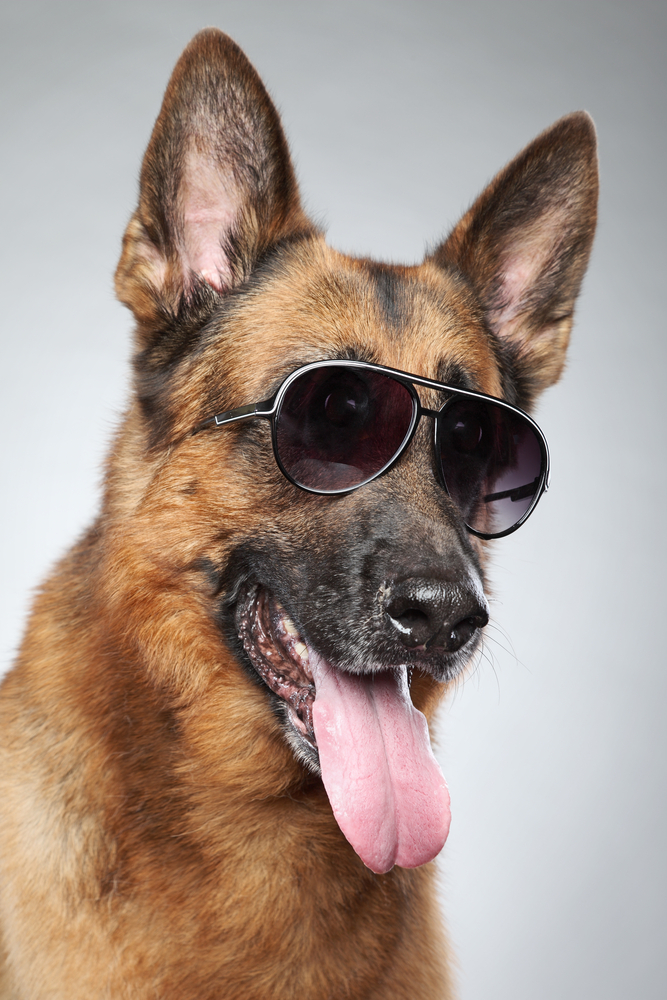 Temperatures are rising, kids are out of school, and you’re probably planning a trip to the beach this weekend – summer is finally here! Whether or not your dog is a personal protection dog, this season is a wonderful time to be a dog owner. Unlike during winter months, summertime allows you to play, swim, and run with your dog in more pleasant weather than any other time throughout the rest of the year. However, with the fun come unique risks to your dog’s health. For all the ways our guard dogs protect us, it’s important to protect them from any possible harm, as well. Being aware of the risks and taking the appropriate precautions can maintain your dog’s safety throughout the summer and keep the focus on all of the fun outdoor activities that you will be doing together.
Temperatures are rising, kids are out of school, and you’re probably planning a trip to the beach this weekend – summer is finally here! Whether or not your dog is a personal protection dog, this season is a wonderful time to be a dog owner. Unlike during winter months, summertime allows you to play, swim, and run with your dog in more pleasant weather than any other time throughout the rest of the year. However, with the fun come unique risks to your dog’s health. For all the ways our guard dogs protect us, it’s important to protect them from any possible harm, as well. Being aware of the risks and taking the appropriate precautions can maintain your dog’s safety throughout the summer and keep the focus on all of the fun outdoor activities that you will be doing together.
Heat stroke
The higher summer temperatures can be uncomfortable – and sometimes dangerous – to pets and people. A dog’s body is equipped to cool itself, but it is much less efficient at doing so than our bodies. Hence, if your dog’s body temperature rises too high for a prolonged period of time, a heatstroke can occur. This can lead to brain and organ damage, heart failure, and even death. This is most common when dogs are left in the car for too long or when they exercise in heat for an extended period of time.
Prevention: Never leave your dog in the car during hot weather, even with cracked windows. Be sure that your dog always has access to shade outside. Invest in a few pet products designed to help your dog keep cool, such as cooling pads, vests, and cooling collars. Do not muzzle your dog as it hinders their ability to pant, which helps them cool themselves.
Treatment: If your dog exhibits the signs of a heat stroke, such as abnormally heavy panting, fast heartbeat, dazed look, and/or vomiting, take actions to gradually lower his body temperature immediately. Move him to shade or inside where there is air conditioning, apply ice packs to his belly or neck, offer him ice cubes to lick, and then take him to the vet right away.
Sunburn
Anyone who has experienced sunburn can testify that it is one of the least pleasant products of summer. Dogs can burn in the sun the same way that people can. Similar to human sunburn, it causes pain, itching, peeling, and discomfort. White and light-colored dogs have a higher risk of sunburn.
Prevention: Apply waterproof sunscreen formulated for babies or pets. Your dog’s ears and nose, back, as well as the skin around its mouth, should be especially protected.
Treatment: For mild sunburns, apply aloe vera juice, vitamin E, moisturizer, or witch hazel to the burns for relief. If your dog has broken skin or severe sunburn, we recommend taking him to the vet as soon as possible.
Burned foot pads
Have you ever stepped onto a sun-bathed sidewalk with bare feet in the summer? If this was painful to you, imagine how painful it can be to your dog. Sidewalks, asphalt, and other surfaces reach extremely high temperatures during the summer and can potentially burn a dog’s paws.
Prevention: Walk your dog when surfaces are coolest – in the early morning and at night. If you must be out with your dog during the day, use your hand to test out the temperature of the surface. If it’s too hot for your hand, it’s too hot for your dog. Play on grass or in shady areas. Avoid beaches during the day as it reflects the sun and is especially harmful to your dog’s paws.
Treatment: Just like sunburns, assess the severity of the burn. Treat mild burns with the same soothing products, and plan a visit to the vet for more intense burns.
Dehydration
Water is essential to all living things, including your protection dog. Like humans, dogs need water to maintain proper health and to keep all of their biological processes working. If your dog is not getting enough water, he may become lethargic, depressed, and will lose his appetite.
Prevention: Whether you’re spending time indoors or outdoors, always provide your dog with unrestricted access to fresh and cool water. Keeping ice cubes made of water or broth will encourage your dog to consume more fluids and stay hydrated.
Treatment: If you suspect that your dog is dehydrated, move him to a shady location and provide him with water and/or wet dog food. However, a severely dehydrated dog will need the attention of a vet.
